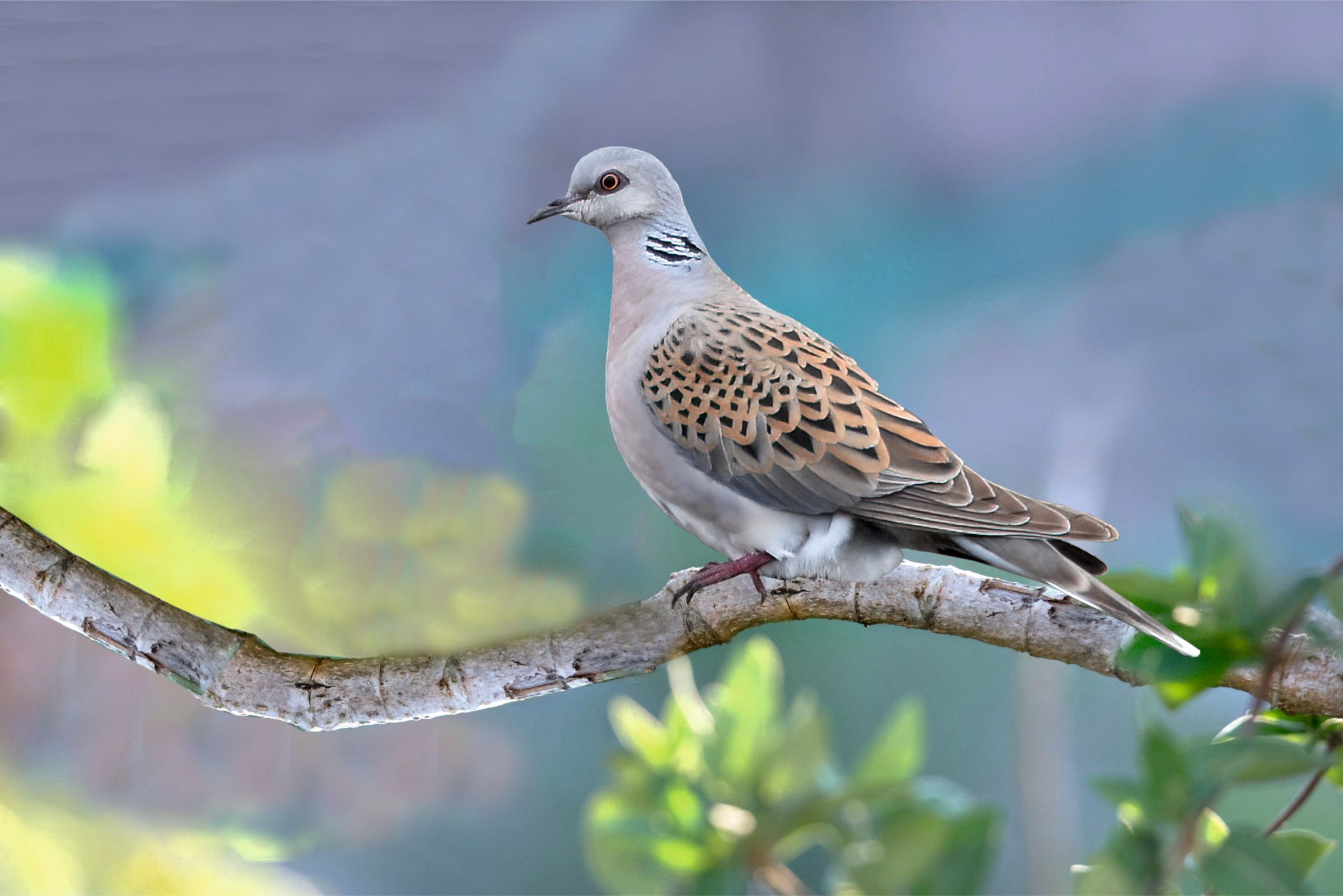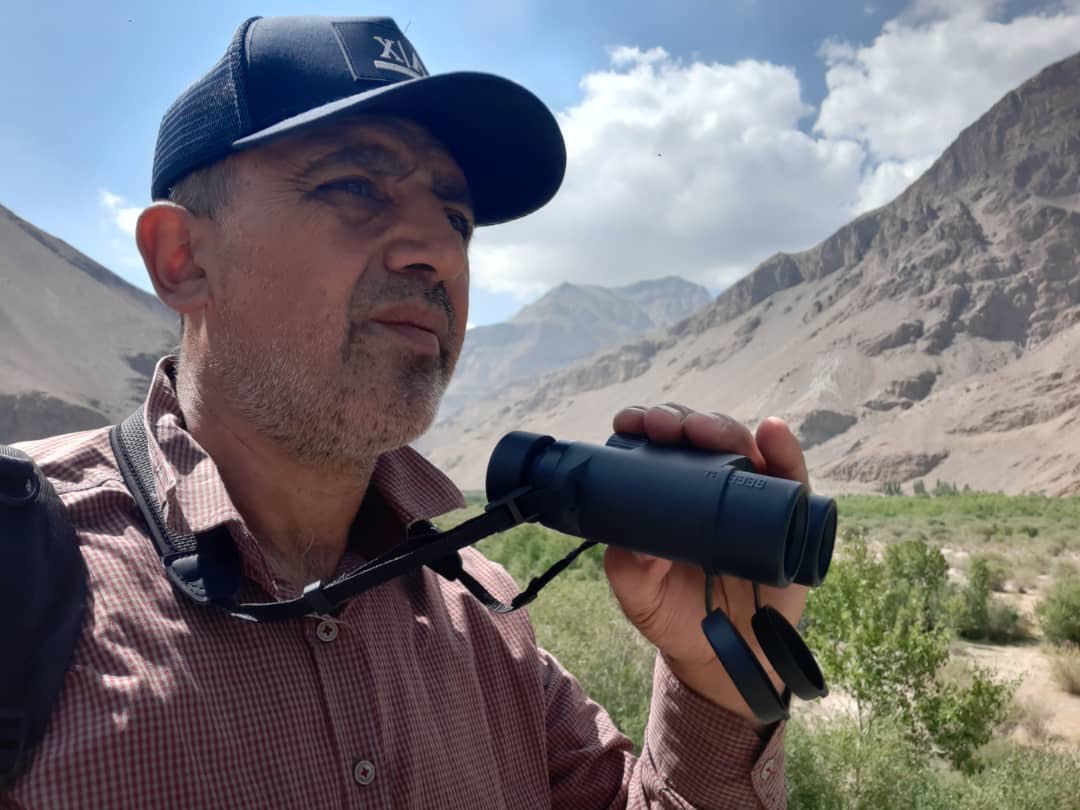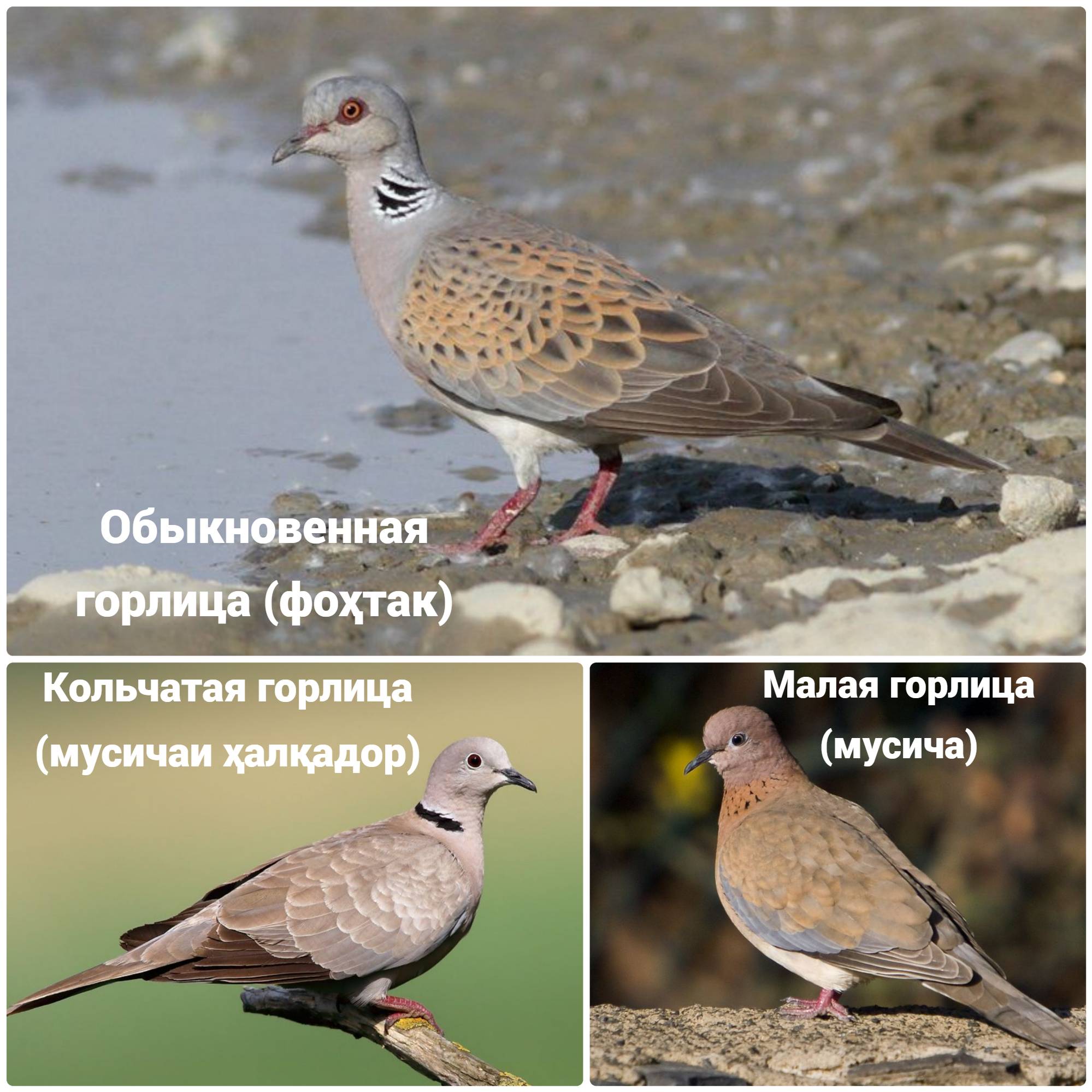The turtle dove, declared the ‘Bird of the Year’ in Tajikistan, is now practically non-existent in the country. Experts suggest that this is due to a complex of reasons related to the deterioration of environmental conditions.”

“In the second half of the 20th century, the common turtle dove (Streptopelia turtur – fokhtak or musicha in Tajik) was a widespread species in Tajikistan due to an abundance of food supply. The turtle dove has been declared the “Bird of the Year – 2024″ and in the same year was included in the third edition of the Red Book of Tajikistan.
The number of common turtle doves in the country ranged from several tens of thousands in different years. Now it is rarely found, only as individual specimens.”
Abduvali Safarov, a farmer from the Jomi district in Khatlon province, says that in recent years, the turtle dove is increasingly rare in the fields. According to him, it often nested in gardens near populated areas with mulberry, poplar, and various fruit trees. The turtle dove would pick seeds and grains from the ground without touching the stalks or blossoms. “This type of dove was only beneficial to farmers. The birds helped us by eating weed seeds among other things,” says Abduvali Safarov.
In his opinion, the disappearance of the turtle dove may be due to the use of pesticides and the introduction of new seeds. After the collapse of the Soviet Union, the work of breeders in Tajikistan virtually ceased, and farmers began using seeds imported from other countries.
“Perhaps salinization of land and its unsuitability for cultivating grain crops have also reduced the food base for the turtle dove, and it stopped flying to our region,” added Abduvali Safarov. According to Garibmamad Garibmamadov, senior research fellow at the Institute of Zoology and Parasitology of the National Academy of Sciences of Tajikistan (NAST) and candidate of biological sciences, the common turtle dove used to be a typical nesting species throughout Tajikistan. The expert also explained the difference between the smaller dove, known as musicha in Tajikistan, and the common turtle dove. Garibmamad Garibmamadov noted that there are 18 species of doves. Their habitat range is vast, with doves found in Europe, Asia, North Africa, and Australia. Depending on the species, doves differ in size, body structure, coloration, feeding habits, and habitat. For example, compared to the Eurasian collared dove (Streptopelia decaocto) and the smaller dove, the common turtle dove is distinguished by its mottled back and two-toned tail from above. “The common turtle dove differs from the larger turtle dove, which is similar in size, by the coloring of the feathers on its back and the upper wing coverts,” says the ornithologist. Additionally, the common turtle dove is a migratory bird, while the smaller dove (musicha) is not. During the autumn migration, the common turtle dove would form small flocks of 10 to 18 specimen and was widespread, especially when the grain crops ripened. “This is no longer the case. It means there have been changes in nature, and these birds have disappeared,” says Garibmamad Garibmamadov. During a 2017 expedition, individual nesting pairs of the common turtle dove were only found in the south of the country, in the floodplain of the Surkhob River. According to Garibmamad Garibmamadov, during a 2023 expedition to count the number of birds, they found no more than 4-6 individuals in the “Tigrovy Balki” reserve.“The common turtle dove has practically disappeared from all characteristic biotopes of the plain and foothill zones of Tajikistan,” says Garibmamad Garibmamadov.
“The traditional pre-sowing treatment of grain with highly toxic pesticides, leading to the poisoning of many birds, has obviously had a negative impact. A possible factor, according to scientists, has been the impact of droughts, which have become more frequent in recent decades in the wintering grounds of turtle doves in Africa, as well as hunting for them in the same places.”
“Experts point out that this situation clearly indicates the need to take urgent measures to protect this species. Moreover, the exact causes of the observed catastrophe have not yet been precisely established.
Already listed in the Red Book
Garibmamad Garibmamadov believes that saving this species largely depends on organizing protection at the nesting sites of the species in Tajikistan, where the main part of its range is located.
To date, the common turtle dove has been included in the third edition of the Red Book of the Republic of Tajikistan with the status of “Critically Endangered” (CR), and is also included in the IUCN Red List as a vulnerable species (VU).”The expert added that in the recent past, with the exception of Eastern Pamir, the common turtle dove inhabited almost all the rest of Tajikistan. The modern fragmented range of the species covers the plain and foothill zones of the republic.

According to him, the common turtle dove inhabited foothills and valleys with developed woody vegetation, gardens, parks, and mountain slopes with mixed woody-shrub vegetation. In the valleys, this bird settled in fruit orchards and forest belts.
Garibmamad Garibmamadov noted that this is a migratory bird that winters in the central regions of Africa and the southwestern part of the Arabian Peninsula.
The spring migration occurs from early April to early May. Upon arrival, pairs immediately begin nesting. Characteristic nesting habitats include floodplain tugai thickets of sea buckthorn, turanga, barberry, and other tree species, as well as parks. These birds begin breeding in early May. The clutch consists of two eggs, and only one clutch is produced per year. The chicks hatch in July.
However, if the nest is lost and the chicks die, the female can lay a second clutch. The turtle dove is exclusively granivorous. Its diet includes seeds of cereals, grains, and other plants. The common turtle dove collects its food on the ground.”
In August, before migration, birds gather in flocks in fields with harvested grain crops. Departure occurs in late September – early October.
According to the specialist, the occupation of characteristic habitats in the plain and foothill zones and illegal shooting at wintering sites are the main reasons for the decline in the species’ population.
The disappearance of the common turtle dove from many of its typical habitats may also be linked to the spread of the collared dove in Tajikistan, which has entered into strong competition with it.
Competition with “Relatives”
Ornithologists suggest that the limiting factors have not been precisely identified. In their view, the most likely reasons include deteriorating environmental conditions in wintering areas, bird deaths from acute toxic pesticides used in agriculture, hunting pressure, and interspecies competition.
According to Garibmamad Garibmamadov, “It is logical to assume that the reason for the sharp decline in the common turtle dove population should be sought in the loss of quality habitats along migration routes and wintering grounds.” For this species, negative changes in wintering areas have long been noted, where the availability of suitable habitats, food resources, and water sources is decreasing.“It also seems necessary to assess the role of increasing competition from the Eurasian collared dove over a large part of their shared range,” says Garibmamad Garibmamadov.

He suggests that the competitiveness of each species is determined by how well environmental conditions match the species’ set of ecological needs, from the most significant to the less significant ones.
The Eurasian collared dove is believed to have originated in Southwest and South Asia. This species was once widespread in Kyrgyzstan and Kazakhstan. In the 1940s and 1950s, collared doves almost disappeared everywhere, though the reasons for this are unknown. In the 1970s, the collared dove began to spread again, moving from the south to the west, restoring its primary range. Later, the collared dove was first recorded in the mid-1990s in Khujand and then in Badakhshan. “In the summer of 2006, we observed collared dove nesting for the first time in the vicinity of Dushanbe,” stated the expert. Observations have shown that this species not only began to spread and nest but is also becoming a resident bird species in Tajikistan, meaning it is now seen year-round. “The increase in the collared dove population in various human-altered landscapes, especially in fruit and tree plantations, has led it to gradually displace a closely related species—the common turtle dove—from these areas in recent years,” claims Garibmamad Garibmamadov.Climate Change and High-Rise Construction
Scientists believe that as a result of urbanization, new semi-natural biotopes are being formed. Some of these turn out to be favorable for certain bird species while being unattractive to other species that previously inhabited the area.
According to Faridun Rahimov, a researcher at the Institute of Zoology and Parasitology of the National Academy of Sciences of Tajikistan (NAST), this leads to changes in the structure of bird communities: changes in species composition, population size, and ecological structure. At the same time, behavioral changes are observed. For example, in the past, areas around two-, three-, or four-story buildings often contained patches overgrown with various types of trees, mainly fruit and ornamental trees, shrubs, and abandoned garden plots. “This, in combination with other factors (the presence of a food base in the form of fruits and seeds), created favorable conditions for some species of birds. The common turtle dove, blackbird, Turkestan long-tailed flycatcher, green warbler, oriole, black crow, grey crow, rook, and jackdaw began to settle here willingly.In the attics of the aforementioned houses, the common pigeon nested in large groups, while the house sparrow and black swift nested under the eaves. Over the past decade, there has been an intensive demolition of these houses, and multi-storey buildings have begun to be built in their place.
Consequently, the vegetable gardens around the houses disappeared. They were replaced by well-groomed lawns, often without shrubs, and the multi-storey buildings themselves did not have attics.
“As a result, birds that nested early and inhabited these biotopes left their habitats and flew to more suitable places,” said Faridun Rakhimov.
What is the “Bird of the Year”?”

In many countries around the world, including Tajikistan, the annual “Bird of the Year” competition aims to inform and, above all, send a specific message to the state and the public about the preservation of rare and endangered bird species. As reported by CABAR.asia, the head of the Union for the Conservation of Nature and Biodiversity of Tajikistan, Nurali Rakhimov, said that every year the Union for the Conservation of Nature and Biodiversity of Tajikistan, in cooperation with the Institute of Zoology and Parasitology of the National Academy of Sciences of Tajikistan, with the support of the German International Conservation Organization NABU, conducts the “Bird of the Year” campaign.”
“The “Bird of the Year” campaign in Tajikistan was initiated in 2008 and has been held annually ever since.
“The ‘Bird of the Year’ campaign is aimed at drawing the attention of a wide range of people to the problems of protecting a specific bird species,” says Nurali Rakhimov.
According to him, in November-December of each year, at the initiative of the Union for the Conservation of Nature and Biodiversity of Tajikistan, a competition is announced to determine the nominee for “Bird of the Year”. Over the past 10 years, the birds of the year have been the chukar partridge, eagle owl, roller, Tajik pheasant, white stork, paradise flycatcher, Tibetan ular, hoopoe, saker falcon, barn swallow, and golden eagle.”
The “Bird of the Year” campaign includes the implementation of a complex of measures aimed at activating the popularization of environmental knowledge throughout the year, which consist of organizing conferences, seminars, round tables among students and faculty of higher educational institutions, students of secondary schools, etc.
Also, field meetings are organized with the local communities living within the range of the “Bird of the Year” nominee and who may have a potential impact on its key habitats.
As part of the “Bird of the Year” campaign, expeditions are also organized to assess the status of the nominee’s population and other bird species.
Importance of Conservation Measures

Observations by specialists from the International Ornithological Organization, uniting nearly two hundred ornithologists from different countries, indicate that the common turtle dove is on the verge of extinction.
Dr. Abdusattor Saidov, Doctor of Biological Sciences, Corresponding Member of the National Academy of Sciences of Tajikistan, and zoologist, emphasized that according to observations by scientists from the International Union for Conservation of Nature, the population of this species has catastrophically declined in recent years, and it has disappeared from most of its former range. According to the specialist, a sharp decline in the population of the common turtle dove within its global range began in the 1990s. For example, according to estimates by ornithologists in some parts of the range, the population of the common turtle dove has decreased by almost 100 times. Many ornithologists cannot find an exact answer to such a sharp decline in the species’ population. Nevertheless, habitat degradation is considered a global threat. This also applies to the common turtle dove within its overall range. “The likely causes of the rapid decline in the population of the common turtle dove are the transformation of the species’ characteristic habitats under the influence of human impact, poaching, and possibly climate change,” Abdusattor Saidov told CABAR.asia.“Other factors cannot be ruled out. Dynamic processes take place in ecosystems. During the period of its evolutionary development, each species experiences population waves towards a decrease or increase in numbers.”
“This is natural, however, the catastrophic decline of the common turtle dove as a globally threatened species is a cause for serious concern,” noted Abdusattor Saidov.
A number of scientists from European countries indicate that in certain parts of the range, a strong factor in the decline of the species is hunting, both legal and illegal.
According to scientists’ estimates, every year in the Mediterranean alone, poachers kill about 600 thousand turtle doves, primarily in Libya, Syria, and Greece. In addition, according to various data, legal hunters kill about 2 million turtle doves, mainly in Spain, Greece, and Italy.
“Fortunately, the issue of poaching of the common turtle dove in Tajikistan is out of the question. Tajiks have long had a special respect for the common and collared dove (musicha and fokhtak). According to a long-standing tradition, killing these birds is considered a great sin,” says Abdusattor Saidov.
The specialist emphasized that the conservation of any threatened species requires great efforts to preserve the integrity of its overall range.
Scientists agreed that it is probably time to take effective measures to preserve the characteristic habitats of this species.
“In addition, it is necessary to widely promote the protection of the common turtle dove as a rare bird, as well as to conduct in-depth studies of the distribution and biological characteristics of this species,” says Abdusattor Saidov.”

